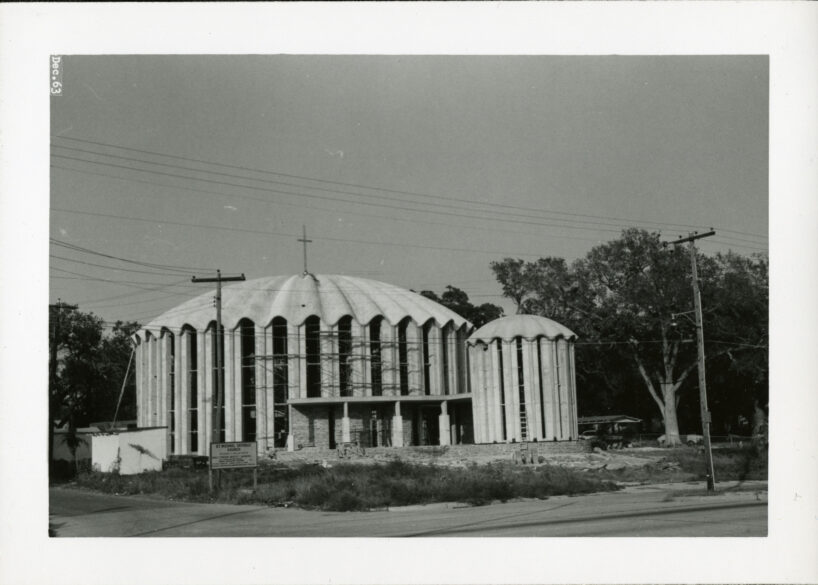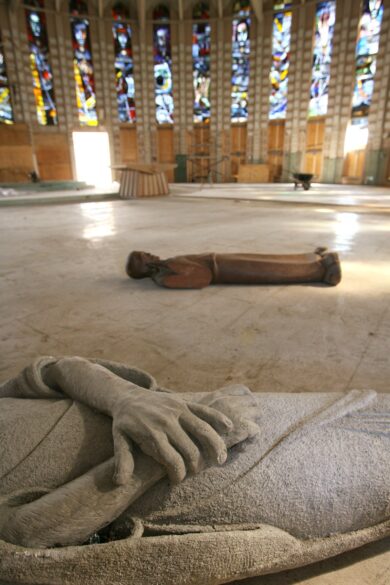
From the Archives
By Mary Woodward
JACKSON – This past week several chancery staffers, including myself, attended a regional conference in Biloxi for the Diocesan Fiscal Managers of several dioceses and archdioceses in the southeast. The opening Mass on Sunday evening was celebrated in St. Michael Church by the two host bishops, Bishop Louis Kihneman of Biloxi and our own Bishop Joseph Kopacz.
Established by Bishop John Gunn and known as the “church of the fishermen,” St. Michael dates back to 1917. Being just a stone’s throw from the Gulf of Mexico, it has been buffeted by several hurricanes. As our group approached the church with its distinctive shell roof and round shape, images of that roof from the helicopter flyover on the news the morning of Aug. 30, 2005, filled my mind.

From the air the church looked intact, as if it had miraculously survived unscathed from the 28-foot storm surge of Hurricane Katrina the day before. But as the days went by and reports came into the chancery in Jackson from Biloxi, we learned the church interior was decimated. That distinctive roof seen from above was hiding the massive power of Mother Nature gone wild.
The five-ton marble altar was cast to the side off its platform and much of the interior appointments had been swept away by the surge leaving an almost empty shell behind. The waterline was well up the interior walls of the church.
Now more than 18 years later, St. Michael stands as a testament to the resilience of the people of the Gulf Coast, who have survived more than one catastrophic storm over the past 100 years. Memories of Aug. 29, 2005, still linger in the physical landscape of the Gulf Coast, which took the direct hit of Katrina. These memories also are carried in the collective psyche of those who endured the wrath and persevered in rebuilding a vibrant community.
Moving forward in faith as intentional disciples while always keeping an eye on the Gulf.
(Mary Woodward is Chancellor and Archivist for the Diocese of Jackson.
